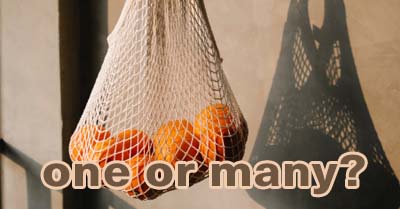Simple and Complex Subjects
The Simple Subject
The simple subject is the main word or words that refers to the grammatical subject of the sentence (i.e., the person, place, thing, or idea that does or is something). It's the “core” or main part of the subject. It is also the part of the subject that the verb agrees with.
Simple subjects
Notice the simple subjects in the sentences below (highlighted in bold):
- Family is important in our lives. (simple subject: family)
- Learning takes a great deal of commitment. (simple subject: learning)
- Albert Einstein developed the theory of relativity. (simple subject: Albert Einstein)
- Belgium became a country in 1830. (simple subject: Belgium)
The Complex Subject
Articles, adjectives, phrasal verbs, and even embedded clauses can be added to the simple subject. The resulting construction is called a complex subject.
You can always break a complex subject down to a simple subject, which is ultimately what the verb must agree with.
In the examples below, notice how you can add information to a simple subject and make it a complex subject in the following sentence groups. The complex subject is highlighted, and the simple subject is in bold.
From simple to complex subjects
Example 1
-
Family is important in our lives. (Simple subject: family)
- A strong family is important in our lives. (Simple subject: family. Complex subject: A strong family.)
- A strong family working together is important in our lives. (Simple subject: family. Complex subject: A strong family working together.)
- A strong family working together during difficult times is important in our lives. (Simple subject: family. Complex subject: A strong family working together in difficult times.)
Notice that, in each of the sentences above, the simple subject remains the same; the verb (is) always agrees with “family.”
Example 2
- Learning takes a great deal of commitment. (Simple subject: learning.)
- Learning a new language takes a great deal of commitment. (Simple subject: learning. Complex subject: Learning a new language. )
- The most common online learning taking place around the country today takes a great deal of commitment. (Simple subject: learning. Complex subject: The most common online learning taking place around the country today. )
Identifying Singular and Plural Simple Subjects
A plural subject refers to more than one person, place, thing, or idea. A singular subject refers to only one.
”Peaches” can be used as a plural simple subject: “The peaches look delicious.”.
“A bag of peaches” is a complex subject where “a bag” is the singular simple subject: “A bag of peaches is hanging from the ceiling.”

Sarah Chai | Pexels
To identify whether the verb must agree with a singular or plural subject, you must identify the simple subject. This commonly leads to grammatical errors because we lose track of the subject of the sentence and end up making the verb agree with the noun that is closest to the verb.
For example, in the sentence sentence below, you may be tempted to make the verb agree with “expenses” (or even “Americans”); however, when you find the actual simple subject in the sentence, you realize it is a singular subject (“the number” ).
The number of Americans who cannot afford medical expenses has increased in the last two decades.
The simple subject is “the number,” that is, you are expressing that “the number has increased” (not have).
Below are a few more examples,
Potentially misleading complex subjects
What is the correct verb in each of the sentences below?
- Hurricane-force winds generated by the storm (has/have) caused extensive damage.
- The increase in the price of gas at the pumps (is/are) making it difficult for many people to afford their daily commute.
- The large number of job applicants (has/have) made the interview process lengthy.
Sentence 1 has a plural subject. You may be tempted to write, “…the storm has caused extensive damage,” but that would be grammatically incorrect because that is not the simple subject of the sentence.
The simple subject is “(hurricane-force) winds.” Essentially, the idea is that these “winds have caused damage.”
Sentence 2 is similar to the previous sentence in that it may appear that the verb should agree with “pumps.” However, the simple subject is “the increase.” It is the increase that is making something difficult for people, not the pumps.
Sentence 3 is similar to the example using “number” we saw earlier. Do not be misled by the proximity between “applicants” and the verb. The simple subject is “the number” (of applicants). The applicants have not made the process lengthy; the (large) number (of applicants) has.
”The Number” vs. “a Number of”
As we saw earlier, “the number” is a singular noun; however, the following sentence, uses “a number of” as an expression (similar to “a lot of”), which is part of a plural subject:
A large number of Americans have not voted in the last presidential elections.
You would not say “a lot of people has,” right? “A number” and “a lot” are similar expressions, and they build plural subjects such as “a number (or a lot) of people,” “a number of (or a lot of) cities," “a number of (or a lot of) solutions,” and so on.
Other “troublesome subjects” (e.g., using a number, a majority, or most of) can be problematic, particularly in formal English, where you may see more complex sentences compared to the sentences in everyday, spoken language. Depending on how they are used, they can make the simple subject singular or plural depending on the noun attached to them.
These troublesome subjects will be covered in separate lessons. (See “Related Lessons” below. ) In this lesson, we covered only the basics in complex and simple subjects; just be aware that it can get a bit more complex.
Assess Your Learning
Practice 1. Practice finding the simple subject in complex subjects.
Practice 2. More practice finding the simple subject in complex subjects.
Practice 3. Practice subject-verb agreement with complex subjects.
Practice 4. Practice subject-verb agreement with complex subjects in more complex sentences.
Related Lesson
Congratulations on completing this lesson!

Thanks to our supporters!
This material has been made possible by supporters like you. Learn how you can support us.
Thank you for Supporting Snap Language
Snap Language supporters make the creation of these materials possible.
Learn how you can support our work, get perks, and help us continue creating high-quality materials.
You can support us by simply white-listing this site.